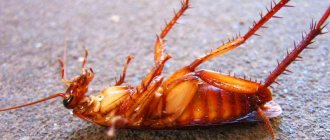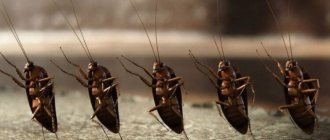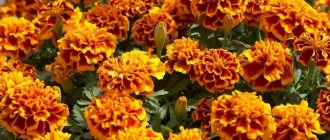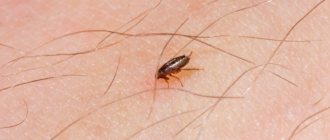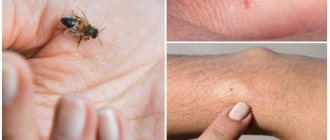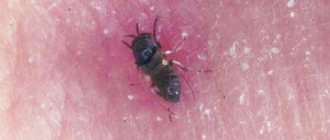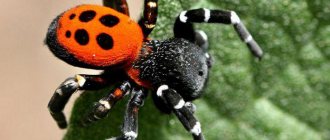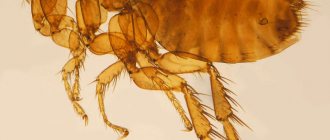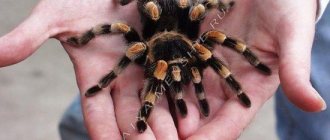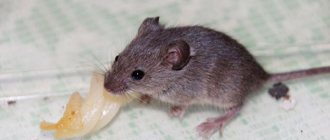Feeding features of the house wasp
Wasps can be described as almost omnivorous creatures, and this is the main difference between them and bees. However, there are many nuances in their way of eating and diet. The larvae can feed exclusively on animal food - other insects. It follows that the younger generation can be of great benefit to gardeners by helping to destroy crop pests. The diet of wasps includes:
- Insects and their larvae;
- Meat;
- Fish;
- Fruits;
- Nectar of flowers;
- Syrup.
The food preferences of wasps vary greatly depending on their stage of development. The scientific explanation for this fact is to exclude competition for a food source between individuals of the same species at different life stages.
Wildlife - who warns insects
All latitudes are characterized by the bloodthirstiness of the natural habitats of insects. Forests, clearings, steppes, banks of reservoirs - processes of eating each other take place everywhere. Ants are no exception in this chain.
Despite their small size, as well as their place of residence underground, they are always found.
Who considers ants a delicacy in the wild:
Bear
Although bears don’t really like to eat ants, if they are very hungry, then they don’t have to choose. They hunt as follows: the bear puts its claws inside the anthill, after which it licks off the insects that get there.
Jerzy
Hedgehogs, like mice, are quite omnivorous, so if they come across an anthill on their way, they can have a light snack.
Spiders
In rare cases, insects become food for spiders, but this can be considered the exception rather than the rule. This is explained by the fact that they are rarely caught in nets, and the spiders themselves try to avoid encounters with them, since their bodies contain acid that is strong enough for them.
Fish
Along with the rain, small debris, soil, leaves, grass and, of course, various insects are washed into the water, which immediately become prey to fish.
frogs
The main diet of the amphibian is considered to be the consumption of flies and mosquitoes. But in order to diversify their menu, sometimes they eat ants, and they catch them using their usual method - using their tongue.
Internal enemies of ants
The internal enemies of the ant population include some types of fungi, insects and helminths:
- Mushrooms of the genus Cordyceps infect, kill the insect, and the fruiting bodies of the fungi sprout from its body.
- Fanwings are insect parasites that use ant individuals to attract partners during mating.
- Humpback flies lay eggs in the body of a living individual. The developed larva decapitates the insect using a special enzyme.
- Blueberry butterfly larvae develop in ant nests. Caterpillars secrete the same odorous substances as ant larvae. Therefore, ants take care of them, and caterpillars feed on their pupae.
- Lomechusa beetle - with the help of a secreted drug, this parasite forces insects to feed and care for it more than for their offspring, and the anthill degenerates.
- The parasitic wasp Aphylanthops feeds its larvae with insect wings.
What do adults eat?
The diet of wasps is quite varied. Insects prefer fruit and berry juices and fruit pulp. Among their favorite fruits are raspberries, plums, apricots, strawberries, and grapes. Wasps try to avoid harder fruits whenever possible. Adults are very attracted to overripe fruits that have begun to ferment. Syrup, honey, jam and sugar are among the favorite products of winged sweet tooths. Wet sugar or fresh jam will inevitably attract many wasps into your apartment.
Some representatives of aspens at certain stages of their life cycle give preference to the young of various beetles, as well as some species of wasps. These predators are capable of exterminating even larger insects and can successfully hunt spiders of impressive size.
While feeding their larvae, adults hunt other insects and feed them chewed to their offspring. In the process of chewing the prey, the predator also consumes some of its hemolymph. Hemolymph is rich in protein and replenishes the energy reserves of the imago. Directly in the process of feeding and transferring food to the larva, the adult insect receives some of the saliva of the offspring, from where it takes the necessary substances for normal life. However, despite this, plant foods and sweets are preferable for imagoes. A danger to people is represented by wasps that appear out of nowhere in the apartment, flying to the aroma of food.
What do they eat
What wasps eat depends on their habitat. And also on age. Larvae have their own diet, and adult wasps have their own. Their oral apparatus is equipped with powerful jaws capable of chewing through fairly hard food.
But since this is associated with high energy costs and effort, these Hymenoptera prefer soft or liquid food.
In nature
What a wasp eats in nature depends on its species:
- The philanthus (bee wolf) eats honey, and feeds the younger generation with killed bees. Having caught its relative, the philanthus squeezes out and eats the honey, and the offspring feeds on the bee body.
- Scolia (large earthen one) hunts the offspring of the rhinoceros beetle, the beetle. She burrows into the ground, finds the victim, paralyzes it with poison, and then drags it into a prepared hole. Lays eggs on top of the carcass. Creates a new hole for the next larva.
- Pompilides (road). Their larvae prefer to feed on spiders. Some pompylids prey on poisonous tarantulas. Nests are built in the soil or inside branches, young shoots or old cavities of tree trunks. One spider body is enough to feed one larva.
Vegetarian wasps prefer to eat flower nectar and fruit juice.
At home
In search of food, these hymenopteran insects often fly closer to people. Even people without zoological education know what wasps eat at home, since they have seen it with their own eyes more than once.
First of all, they are attracted to something sugary and sweet: carbonated drinks, chocolate, ice cream, wine. They prefer to eat syrups. In the summer, it is better not to keep wet sugar in the open.
Hymenoptera are partial to fermented berries and fruits. They deliberately leave a hole in the skin of the grapes so that after a couple of days they can return and drink the fermented juice. In addition to grapes, they love raspberries, strawberries, and plums. As other fruits (pears, apples) ripen, they switch to them. However, such fruits are less preferable because they are harder.
Nutrition of larvae
Wasps in the larval stage are insectivorous. According to the type of feeding, the larvae are divided into 2 groups: those that parasitize the eggs and larvae of beetles, and those that eat chewed insects of various types. The well-known paper wasps and hornets feed their offspring, which are not able to feed on their own. The larvae are unable to move, they only move their heads. The main food of young animals consists of the following insects:
- Butterflies;
- Bedbugs;
- Caterpillars;
- Slugs;
- Spiders;
- Cockroaches.
When living in close proximity to an apiary, the striped pest will hunt bees in order to feed them to the young. Such large representatives of wasps as hornets are distinguished by their ability to successfully hunt even lizards and mice. Single species of wasps have a less varied diet. Some of them feed exclusively on bedbugs, others on the larvae of certain beetles.
Some species of wasps are characterized by pronounced parasitism. Females climb into the home of other wasps and lay eggs directly on the larvae. It is worth paying special attention to some surprising eating habits of scoliic wasps. Insects do not build nests to raise their young. They lay eggs on prey that has been previously immobilized by poison. Eggs develop on this insect, and when they emerge, the larvae feed on the victim.
Meat and fish are of great interest to wasps, but only as food for the larvae. Adults carry small bitten pieces into the nest and feed them to the offspring, after chewing them first. Both carrion in the forest and fresh meat products at the market are suitable for them. Wasps can appear in the house as soon as they smell the meat smell.
Archive number No. 33 (879) dated August 16, 2011 - Household chores
STINGING TOPIC
Most often, wasps become a problem in the second half of summer, when crops ripen in gardens and vegetable gardens, and fruit appears in houses. This attracts insects that love to feast on the juice and pulp of sweet fruits. Wasps are especially active and aggressive in hot weather.
Paper predators
Scientists call these “yellow-black” insects from the order Hymenoptera paper wasps. Those who have ever seen their nests will understand why. The substance from which they build their house is made according to the same principle as paper: small fibers of wood are ground by insects with their jaws and moistened with saliva. They just don’t bleach, so the nests turn out gray. There are considerable benefits from wasps. To feed their larvae, they drag flies, caterpillars, beetles, larvae of garden and vegetable pests - everything they can handle.
Adult wasps feed on flower nectar, sweet apples, raspberries, gooseberries, pears, but especially love grapes. They do not touch whole and healthy berries. But as soon as the grapes begin to burst, the wasps are right there and begin to gnaw on everything - both burst and whole fruits. They eat out entire caves in apples and pears hanging on trees, in which up to a dozen “aliens” can feast. And of course, if you are making jam, be prepared for a visit from uninvited guests.
When foraging for food, wasps are not so aggressive; they can be driven away from a bunch of grapes or an apple. Just do this not harshly, but delicately. Another thing is when wasps build a nest. At this time, their instinct to protect their home may kick in. By the way, the sting of a wasp is smooth - therefore, unlike a bee, it can sting several times.
At the end of May - beginning of June, scout wasps fly in search of a suitable place for a nest. They really love places where there were wasp houses before. If you have had wasps before, they will most likely come again. In this regard, in the spring, carefully inspect the inside of attics and verandas to see if there are any nests that the founding females of the wasp swarm are beginning to build. At this time, paper houses are the size of a walnut. Having found such a nest, carefully remove and destroy it. Having returned, the female will spin around a little and, not finding her house, will fly to another place. In summer, it is much more difficult to destroy a “mature” nest.
Fighting methods
If one or two wasps accidentally fly into your home, getting rid of them is not difficult. Simple remedies will help - a slipper, a rolled-up newspaper, a towel or dichlorvos, sticky fly paper. In the garden, traps made from plastic bottles will help - cut the neck down to the hanger (label), turn it over and, after pouring sour compote into the bottle, insert the cut-off part into the bottle, neck down. Nests in the ground are filled with boiling water or from a water hose. After this, fill the nest with soil and compact it.
If a wasp starts circling around you on the street, it means you are not far from the nest - the insect is trying to find out if you pose a threat. Stay calm and she will leave you alone.
If you are allergic to bites or there are small children in the family, to whom it is difficult to explain that they cannot be touched, then, of course, it is better to get rid of dangerous neighbors. Especially if a nest has appeared nearby. Otherwise, the chances of being stung increase many times over. In addition, these insects are carriers of intestinal infections, as they fly everywhere, including garbage dumps, and then can land on a plate of washed fruit.
In the wild, wasps build paper nests on the branches of trees and bushes or in the ground, in civilized conditions - under the roofs of houses and barns, on balconies and in niches. It is best, of course, to invite specialists to combat insects. If for some reason this is not possible, remember a few rules.
When approaching the nest, extreme caution must be taken. You should not do this during the day or in the heat! Wasps are less active in rainy weather and at night, as well as at temperatures below +12 degrees.
It is difficult to get rid of wasps using conventional means. They are very sensitive to odors, and if you decide to destroy them with some kind of aerosol, you risk getting into trouble... And the use of baits risks causing wasps to flock from adjacent areas to the smell.
The fight should be carried out in the evening or at night, when all the wasps gather in the nest for the night - this way there is a greater chance of defeating the entire colony. By removing an empty nest in the morning or daytime, when most of the insects fly away, you will expose yourself to prolonged attacks from the returning wasps - they are very vindictive.
If it is not difficult to get to the nest, cover it with a thick bag or bag (knock it there) containing cotton wool soaked in insecticide. And keep the bag closed until all the wasps are dead. Other options are to burn (not suitable for apartments and wooden structures!), scald the nest with boiling water or drown it in water. You can try to cover the narrow “entry” with any plastic material, but this is without a guarantee. For safety reasons, it is better to dress in thick clothing so that you do not get stung - put a mosquito net or beekeeper's mask on your head, and gloves on your hands.
In the home, any contact-acting preparations for insect control are suitable. Such as “FUFANOL” (Denmark), “BAIGON” (Germany), “SIPAZ” (Israel), “KARBOFOS” (Russia). But repellents like Fumitox are too weak for wasps. Good products are “Tetrix”, “Trapsiel” and “Smell-no” (Netherlands), aerosol “Moskitol – Protection against wasps”, the drug “Gett” (they treat the nest or the entrance to it).
When you cannot get to the nest (for example, it is behind wooden panels), try injecting drugs into it with a syringe or sealing the entrance with a plastic bag into which you spray insecticide.
To prevent wasps from returning to their old location, the mark from the nest must be scraped off with a knife and treated with a solution of potassium permanganate or hydrogen peroxide, sprayed with any available insecticide and hung with adhesive tape for the most persistent insects.
Usually, with the arrival of cold weather, dacha owners climb into the attic and remove gray wasp nests hanging under the roof. Then they burn them or take them away from the site, thinking that in this way they will get rid of intrusive neighbors. But insects do not overwinter in large nests that have already expired. With the onset of frost, worker wasps and larvae die, and females hide in secluded places for the winter.
First aid for a bite
Make soda lotions - dissolve 1 teaspoon of soda in half a glass of water, soak a cotton swab and apply to the wound, take an antiallergic drug (suprastin, diphenhydramine, diazolin, etc.). A cold compress with a strong salt solution (2 tablespoons per glass of water) will relieve itching. Another option is to rub the wound with garlic, onion or parsley immediately after the bite; this should relieve swelling; you can apply a cotton swab with ammonia diluted 1:5 with water.
If the reaction is very strong, use the hormonal drug hydrocortisone and immediately call an ambulance. Do not waste a second if swelling of the facial tissues, bronchospasm develops, rapid heartbeat, convulsions, pain in the lower back, joints and heart area begin.
Oleg IVANOV, based on Internet materials
Share link:
Subscribe to “For Each Other”:
Yandex News Yandex Zen Google News YouTube Video
Vegetarian wasps
Some species of wasps do not show the slightest interest in meat and fish, as well as in insects as a source of food for themselves or their young. A striking example is the flower wasp, whose diet consists exclusively of flower nectar, regardless of the stage of development. Adults collect nectar from flowers and also store it in their home for their offspring. Other species are very similar to bees in their lifestyle and feeding method - they create reserves of honey.
There are also special types of wasps belonging to the intermediate type. They are in the middle between insects that eat other insects, and radically different from them - they collect and store honey. It is difficult to determine by external signs which representative of the wasp tribe is a vegetarian and which is an omnivore or a parasite. Outwardly, they are very similar, and for the most part have a classic black and yellow color.
What are they?
Only representatives of the group of so-called “paper wasps” sting us. These include more than 1000 different species living on the globe, including those common in Russia: the common wasp, the German wasp and the hornet. The first two are very similar to each other both in size and in black and yellow striped pattern, only the German wasp gravitates toward city life, while the common wasp prefers the countryside.
The hornet is the largest and most dangerous wasp, its “sting” is the most painful, but, fortunately, hornets are much less common.
Hornet. Photo: Shutterstock.com/ Maciej Olszewski
Fighting wasps on the site
Before fighting striped predators, you need to find out - is this really necessary? The benefits of them in the form of pest control are obvious. However, if you find a wasp nest in your home, you need to think about a way to eliminate the potential danger.
Wasp traps containing bait are very effective. Considering the food preferences of these insects, it is advisable to use beer, kvass, and fermented fruits. Many gardeners and farmers prefer not to destroy wasps, but use products to protect ripening fruits from pests, in the form of net covers.
Wasps are frequent guests in a private home. They live in close proximity to homes, hunting other insects in gardens or vegetable gardens, and may well fly into a house at the smell of food. If war is declared on these pests, you must take every precaution to avoid exposing yourself, your family, and your pets to them.
Where does the anteater live?
Like their other relatives from the order of edentates, anteaters live exclusively in Central and South America, especially many of them live in Paraguay, Uruguay, Argentina, and Brazil. The northern border of their habitat lies in Mexico. Anteaters are heat-loving animals and, accordingly, live exclusively in places with a warm climate. They like to settle in forests (all anteaters, with the exception of the giant one, easily climb trees) and grassy plains, where many insects live - their potential food.
Enemies in the garden
Anthills located within the garden can also be attacked by all kinds of insects and animals. The danger of these insects lurks even from the air.
Birds
Birds help gardeners by saving them from aphids, midges and caterpillars. Both worker ants and queens that have left their native anthill can also fall into their tenacious paws.
Moles and shrews
As a rule, they overtake their prey underground. While building another “tunnel”, they can feed on both larvae and adults.
Lizards
They can overtake the victim anywhere: even in a garden bed, even in a closed greenhouse.
Antlion
It waits for small insects near its lair, be it an aphid, a spider or an ant.
As you can see, the poor ants have plenty of enemies. Moreover, sometimes even pets - cats or dogs - cause damage to the anthill. However, these insects still remain the most numerous, famous and ubiquitous. Therefore, you can easily stumble upon hills of anthills both in the forest and in the city center - in a sandbox, an old stump or a flower bed.
Reproduction and lifespan
After a warm winter (a secluded place is specially located for this), the queen begins to build a nest and lay eggs there. From these eggs only sterile individuals will emerge, which will further build the nest and obtain food.
And only towards the end of summer the queen begins to lay eggs, from which wasps will emerge capable of reproducing. It is these individuals that swarm and mate with each other.
After fertilization has occurred, young females fly out of the nest and look for a warm shelter for the winter, so that in the spring they can build their own nest. The males die. With the onset of cold weather, the entire abandoned wasp family, along with the old female, dies.
One female mates once and is capable of producing more than 2000 wasps. For the most part, these are worker wasps, sterile. The eggs are sealed in a chamber along with small insects (food). The larvae will then feed and gain weight in order to turn into a wasp.
The larvae that will produce wasps capable of reproducing feed differently. They are fed food that promotes the formation of reproductive organs. After the wasp emerges from the larva, it climbs out of the chamber on its own. The queen is 10 months long, but worker wasps and drones are only 4 weeks old.
Do wasps eat fish or meat?
Anyone who has ever had the opportunity to cut up meat on the bank of a river in the forest could not help but notice how quickly wasps flock to fresh meat, as a result of which it becomes literally covered with striped buzzing creatures. The same picture can often be observed in butcher shops and spontaneous markets. A reasonable question arises whether wasps eat meat or whether they occupy it in anticipation of other victims - flies. In fact, everything is banally simple. The wasps actually bite off miniature pieces, chew them, and then take them to their nests to feed the larvae.
What wasps don't like
Insects are sensitive to various pungent odors, so if you want to get rid of them, you can advise planting lemon balm and mint on the territory of your summer cottage, which can repel pests. The wasp definitely does not feed on such plants; moreover, it really does not like their smell.
Such fragrant plants include wormwood, basil, and geranium. Laundry or tar soap, which can be hung near the nest, repels pests. As surprising as this may sound, the smell of pine or pine smoke is also very unpleasant for insects; if it is detected, they may even leave their nest.
One of the least favorite foods for wasps is ordinary table vinegar and ammonia; insects cannot tolerate their aromas.
Homemade sweet tooths will pick up everything
Domestic pharaoh ants prefer sweet, high-calorie foods. She replaces them with honeydew. First of all, insects pick up sugar, honey, and jam. At the same time, they drag into the nest everything they find in the kitchen and not only:
They will reach into the trash can and clean the discarded eggshells from the whites on the sides. The animals will pick up crumbs in the bowl and even grab a drop of his saliva. Ants can attack a cockroach, kill it and turn it into food supplies. They drag the larvae to themselves and make them their reserves.
House ants prefer sweet, high-calorie foods
Arthropod predators help people get rid of moths by eating pupae and adult moths. Clutches of flies are a godsend. Insects can attack a bedbug nest. But this is the case if everything in the kitchen is washed to a shine, not a single crumb has fallen on the floor, and there are no greasy drops on the tiles. Additionally, pet bowls and trash cans have been disinfected.
Ants can bite people and animals by pinching off pieces of the epidermis and releasing poison. For adults, it's just an unpleasant feeling. Children can be seriously harmed.
